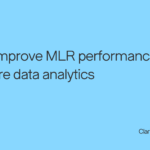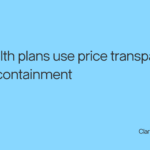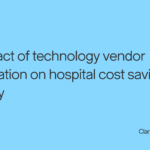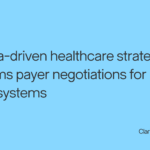Recent studies show that approximately 86% of healthcare costs in the United States are attributable to chronic diseases and the specialty care needed to treat them. Because of this, reducing the cost of specialty care through interventions that can prevent chronic conditions and reduce their severity is a major focus in the healthcare industry. While it is well established that interventions such as smoking cessation, exercise, better eating habits, and certain medications can be effective in averting, forestalling, and monitoring chronic diseases, it can be challenging for clinicians to identify which patients require intervention. This is where planning is critical and predictive analytics essential. Predictive analytics can be leveraged to transform healthcare from reactive to proactive. Insights into clinical and demographic data can help clinicians identify patients who are most at risk of developing chronic conditions. Predictive analytics can help clinicians identify these patients early on to help slow the progression of the disease, thereby reducing the need for expensive treatments and improving patient outcomes and quality of life. This data-driven preventative framework can support both individual and population health and make a significant dent in future specialty care costs. To effectively combat chronic illnesses, healthcare providers should seek to identify individuals at high risk before the onset of disease. Predictive analytics in healthcare leverages clinical, social, and economic data to identify genetic, lifestyle, environmental, and demographic factors that can put patients at higher risk of chronic illness before it begins. Early identification facilitates timely and targeted interventions, potentially preventing the development of avoidable chronic conditions. For example, some patients may be more likely to develop skin cancer, especially if they live in areas that get a lot of sun all year round, have close family members who have had skin cancer, or engage in a lot of outdoor activities. Physicians can be educated in preventative measures and can pass that information along to their patients. Such education and interventions can help prevent chronic illnesses, lessen the severity of symptoms and progression, or catch them early. The ability to intervene early in the disease trajectory not only reduces the financial burden on the healthcare system, but also improves individual health outcomes. Since each one of us has a unique biological makeup, personal history, and circumstances that impact our health, effective preventative care necessitates personalization. Physicians can deploy predictive analytics to tailor preventative care with data-driven insights that incorporate these factors. Predictive analytics supports the creation of personalized preventative care plans by analyzing a patient’s unique data. This approach can encompass anything from tailored dietary recommendations, to exercise plans, to regular health screenings. For example, analytics may uncover a higher-than-average risk of breast cancer, suggesting a need for genetic testing, which can lead to preventative surgery or more frequent screening and monitoring. Another patient may be found to be at risk of diabetes due to consistently high blood sugar levels. Here, a physician may suggest a personalized exercise plan or sessions with a nutritionist to develop better eating habits. Predictive analytics can also monitor changes in patients’ risk factors and health status over time and calculate the impact of these changes on their chances of developing chronic conditions. A patient’s cholesterol levels may go up or down, new vaccines or medications may become available, or new information about their medical family history may come to light. Healthcare providers can use the insights provided by predictive analytics to adjust preventative or early interventions as necessary, ensuring that they remain effective and that the patient continues to receive appropriate care. Both functions help patients stay healthier longer, reducing the need for expensive treatments, helping to allocate resources more effectively, and lowering costs. Predictive analytics doesn’t just support improved health on an individual basis—it can also be applied to manage and improve overall population health by identifying trends in data that suggest a higher risk of certain chronic conditions in groups. By managing population health effectively, providers can lower the prevalence of chronic illnesses, enhance overall health outcomes, and achieve significant cost savings for communities. For example, patients who live in areas affected by the increasing proliferation and frequency of wildfires may be more likely to develop asthma, chronic obstructive pulmonary disease (COPD), or other lung conditions. Predictive analytics can help identify specific populations that may be particularly at risk, such as children and older people. This can help state and local healthcare organizations plan and fund community-wide interventions, such as public service campaigns to let people know when they should wear a mask or refrain from exercising outdoors, or programs to distribute free or low-cost HEPA air filters to remove dangerous particulates from indoor air. Large-scale efforts like these can make a big impact on reducing the incidence of many chronic illnesses, which keep communities healthier while lowering healthcare costs. Communities and healthcare systems can then invest those savings in other important initiatives. Using predictive analytics at both the individual and population levels can make a big difference in specialty care. The insights that data provides can help specialty healthcare providers get ahead of chronic diseases, lessening the need for emergency room visits, surgeries, and other costly treatments. The more customized approach to specialty healthcare that predictive analytics makes possible also helps healthcare organizations deliver a higher quality of care and more efficient operations. With clinical insights into their patients’ risk of illness, physicians can be more precise and confident about their instructions and treatments. In addition, healthcare executives can use information from predictive analytics for more precise planning and decision-making regarding specialist and preventative care. With the power of predictive analytics, everyone wins.Using predictive analytics for prevention and early intervention
Tailoring preventative strategies with healthcare data
Applying predictive analytics to population health
Prevention efforts can add up
- Author Details





